Protecting Ontario’s natural heritage demands a unique blend of modern conservation science and time-honored Indigenous stewardship practices. Land trust standards serve as the bridge between these two worlds, creating a framework that honors both traditional knowledge and contemporary environmental protection methods.
For generations, First Nations communities have demonstrated how responsible land management can preserve ecosystems while sustaining human needs. Today’s land trusts build upon these foundations by implementing rigorous standards that ensure protected spaces remain viable for future generations. These practices include detailed baseline documentation, regular monitoring protocols, and enforcement mechanisms that safeguard conservation values.
What makes Ontario’s approach particularly effective is its integration of Indigenous wisdom with scientific best practices. From the careful mapping of ecological features to the incorporation of traditional seasonal harvesting patterns, modern land trusts are creating a more holistic and sustainable approach to conservation. This collaborative model not only preserves critical habitats but also maintains the cultural significance of these protected spaces.
By embracing both traditional and contemporary standards, Ontario’s land trusts are setting a new benchmark for conservation excellence – one that recognizes the inseparable connection between ecological health and cultural heritage.
The Foundation of Ontario’s Land Trust Movement
What Are Land Trusts?
Land trusts are non-profit organizations that work tirelessly to protect natural and cultural heritage through land conservation. Think of them as nature’s guardians – they acquire and manage properties to preserve their ecological, scenic, or historical value for future generations. These organizations can own land directly, hold conservation easements, or collaborate with landowners who want to protect their property’s natural features.
In Ontario, land trusts play a vital role in safeguarding everything from wetlands and forests to farmland and historic sites. They create protected spaces where wildlife can thrive, water resources remain pure, and people can connect with nature through activities like hiking, birdwatching, and educational programs.
What makes land trusts special is their community-based approach. Local volunteers and supporters often drive these organizations, ensuring that conservation efforts reflect the needs and values of the area they serve. Whether it’s protecting a beloved hiking trail, preserving a critical wildlife corridor, or maintaining traditional Indigenous lands, land trusts work closely with communities to create lasting environmental legacies.
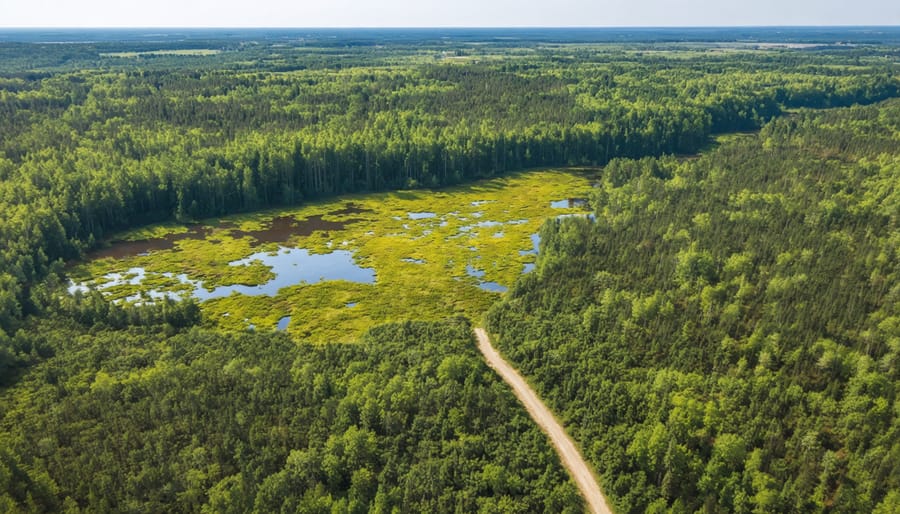
Ontario’s Unique Approach
Ontario’s land trusts have developed a distinctive approach that blends traditional conservation methods with innovative local solutions. Rather than following a one-size-fits-all model, these organizations work closely with communities to create customized conservation strategies that reflect regional needs and values.
A standout feature of Ontario’s approach is the integration of Indigenous knowledge and stewardship practices. Many land trusts actively partner with First Nations communities, incorporating traditional ecological knowledge into their conservation plans. This collaborative approach has led to more effective preservation strategies and stronger community engagement.
Local land trusts also emphasize public access and education, making protected spaces available for hiking, bird watching, and nature photography while carefully managing environmental impact. They’ve pioneered programs that connect urban residents with natural areas through guided walks, volunteer opportunities, and citizen science initiatives.
These organizations have also adapted to address unique regional challenges, from protecting vital wetlands in southern Ontario to preserving boreal forest habitats in the north. By maintaining flexibility in their approaches while adhering to national standards, Ontario’s land trusts have created a robust framework for long-term conservation success.
Traditional Indigenous Land Stewardship
Ancient Wisdom, Modern Application
Long before modern land trusts emerged, Indigenous peoples across Ontario practiced sophisticated methods of land stewardship that maintained ecological balance for countless generations. These Indigenous conservation practices were built on deep observation, respect for natural cycles, and an understanding of the interconnectedness of all living things.
Today, many land trusts are rediscovering the wisdom in these traditional approaches. For example, the controlled burning techniques used by Indigenous communities to maintain healthy forests are now being incorporated into modern forest management strategies. Similarly, traditional knowledge about medicinal plants and wildlife patterns helps inform current conservation planning.
This blend of ancient wisdom and contemporary science creates a more holistic approach to land protection. When you visit protected areas in Ontario, you might notice interpretive signs explaining how certain species were traditionally harvested sustainably, or how seasonal rotations helped maintain biodiversity. These practices remind us that being good stewards of the land isn’t just about preservation – it’s about maintaining a respectful, sustainable relationship with nature.
As visitors, we can honor this legacy by learning about traditional land management practices, respecting designated areas, and supporting land trusts that incorporate Indigenous knowledge into their conservation strategies.
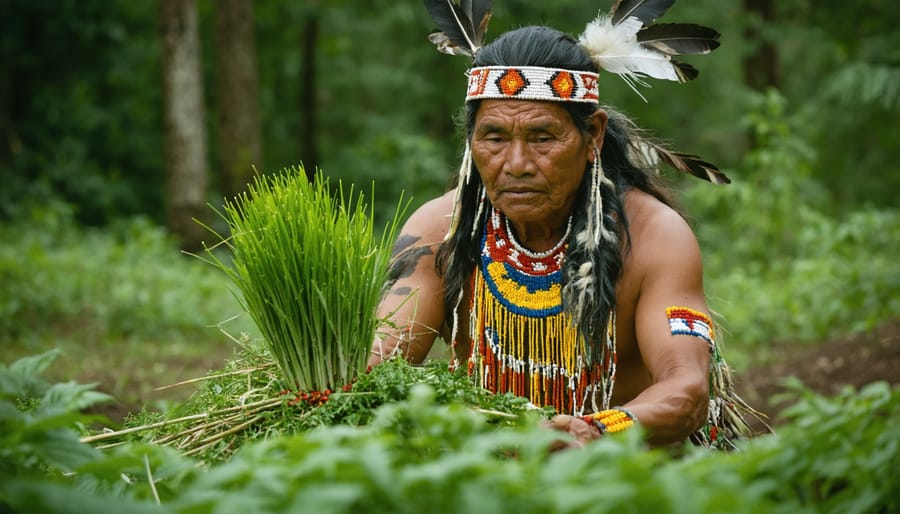
Seasonal Stewardship Cycles
Land stewardship in Ontario follows the natural rhythm of the seasons, drawing inspiration from traditional seasonal practices that have sustained these lands for generations. Each season brings its own set of responsibilities and conservation activities that help maintain the delicate balance of our protected spaces.
Spring marks the beginning of the stewardship cycle with habitat restoration projects, including native plant seeding and tree planting initiatives. It’s also when land trusts conduct their first wildlife surveys and monitor emerging species at risk.
Summer activities focus on trail maintenance, invasive species management, and educational programs that connect visitors with the land. Stewards work diligently to maintain healthy waterways and wetlands while supporting essential pollinator habitats.
Fall brings harvest-focused activities, including seed collection from native plants for future restoration projects. This season is also crucial for preparing protected areas for winter, such as marking sensitive areas and establishing wildlife corridors.
Winter, though quieter, remains active with monitoring activities and planning for the upcoming year. Land trust volunteers conduct winter wildlife tracking, maintain essential winter habitats, and use this time to develop conservation strategies for the seasons ahead.
Throughout the year, these seasonal activities create a continuous cycle of care that preserves our natural heritage while honoring the time-tested wisdom of traditional land management approaches.
Blending Traditional and Modern Practices
Collaborative Conservation Projects
Across Ontario, inspiring partnerships between land trusts and Indigenous communities are demonstrating how traditional ecological knowledge and modern conservation practices can work together harmoniously. The Credit Valley Conservation Authority’s collaboration with the Mississaugas of the Credit First Nation stands as a shining example, where traditional harvesting practices and cultural ceremonies are integrated into land management strategies.
In the Kawartha region, the Kawartha Land Trust has partnered with local First Nations to protect significant cultural sites while maintaining ecological integrity. Their joint stewardship program combines Indigenous fire management techniques with contemporary conservation methods, resulting in healthier forests and enhanced biodiversity.
The Bruce Trail Conservancy’s partnership with the Saugeen Ojibway Nation has led to the creation of collaborative trail management practices that respect both conservation goals and traditional land uses. This partnership has established dedicated spaces for traditional ceremonies while ensuring sustainable trail maintenance.
Another success story comes from the Georgian Bay area, where the Georgian Bay Land Trust works closely with the Wasauksing First Nation. Together, they’ve developed educational programs that share Indigenous perspectives on land stewardship with visitors, creating meaningful connections between people and place.
These partnerships go beyond simple consultation – they represent true collaboration where traditional knowledge holders and conservation experts work side by side. Regular sharing circles, joint decision-making processes, and mutual respect form the foundation of these relationships. The results speak for themselves: enhanced biodiversity, better-protected cultural sites, and stronger community engagement in conservation efforts.
For visitors, these collaborative projects offer unique opportunities to learn about Indigenous perspectives on conservation while experiencing the natural beauty of protected lands through a more culturally informed lens.
Visitor Education Programs
Land trusts play a vital role in connecting visitors with the rich heritage and ecological wisdom of protected lands through engaging educational programs. These initiatives blend scientific knowledge with traditional stewardship practices, creating meaningful learning experiences for all ages.
Many land trusts offer guided nature walks led by experienced naturalists and Indigenous knowledge keepers. These walks provide visitors with unique insights into local ecosystems while incorporating Indigenous cultural education that highlights the deep connection between people and the land.
Interactive workshops are another popular offering, where visitors can learn about native plant species, wildlife habitation, and traditional land management techniques. Seasonal programs might include maple syrup harvesting demonstrations in spring, medicinal plant walks in summer, or traditional food gathering practices in fall.
For younger visitors, many land trusts have developed specialized programs that make learning fun and memorable. Children can participate in hands-on activities like building bird houses, learning about animal tracking, or participating in citizen science projects that contribute to conservation efforts.
Digital resources complement these in-person experiences, with many land trusts offering virtual tours, educational videos, and downloadable guides. These materials help visitors prepare for their visits and continue learning long after they return home.
To ensure these programs remain respectful and authentic, land trusts often collaborate with local Indigenous communities and environmental experts. This partnership approach ensures that traditional knowledge is shared appropriately while fostering a deeper appreciation for land conservation among visitors.
Experiencing Land Trust Properties
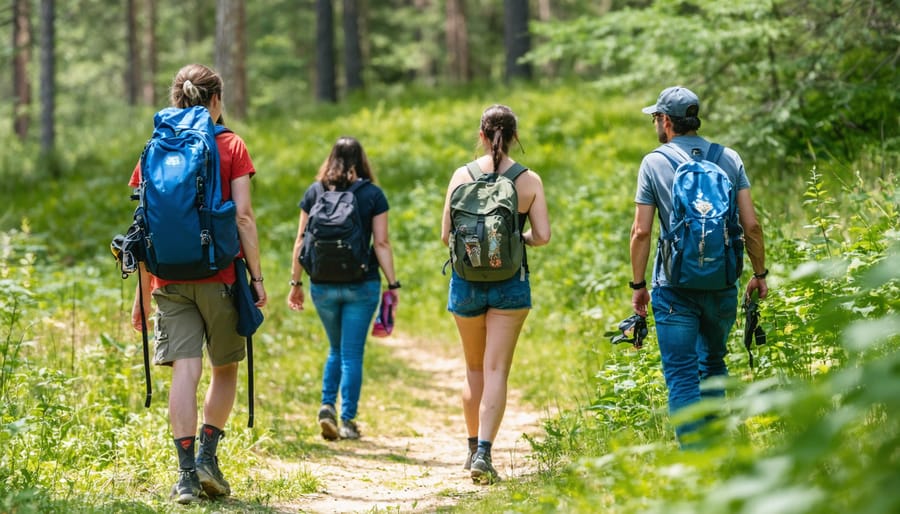
Where to Visit
Ontario’s land trusts protect some of the province’s most breathtaking natural spaces, many of which are open for public enjoyment. The Bruce Trail Conservancy maintains Canada’s oldest and longest marked hiking trail, stretching 900 kilometers along the Niagara Escarpment. Here, visitors can explore ancient cedar forests and dramatic limestone cliffs while spotting rare ferns and orchids.
The Couchiching Conservancy near Orillia offers several accessible trails through wetlands and woodlands, perfect for bird watching and photography. Their flagship property, the Grant’s Woods Nature Reserve, features well-maintained trails and interpretive signs that help visitors understand the local ecosystem.
The rare Charitable Research Reserve in Cambridge combines nature preservation with scientific research, allowing visitors to witness conservation in action. Their Indian Woods trail connects to several Indigenous heritage sites, offering insights into traditional land stewardship practices.
For urban nature enthusiasts, the Oak Ridges Moraine Land Trust properties provide peaceful escapes just outside Toronto. Their Peter’s Woods Provincial Nature Reserve is particularly stunning in spring when trilliums carpet the forest floor.
Remember to check each trust’s website before visiting, as some properties require advance registration or guided tours. Always stick to marked trails and follow posted guidelines to help preserve these special places for future generations.
Respectful Visitation Guidelines
When visiting protected lands, it’s essential to follow these mindful guidelines to ensure these special places remain pristine for future generations. Always stick to marked trails to prevent soil erosion and protect sensitive vegetation. If you’re bringing your four-legged friend along, keep them leashed and clean up after them to maintain the natural environment.
Practice the “leave no trace” principle by packing out everything you bring in, including food wrappers and water bottles. Take photos instead of collecting natural items like flowers, rocks, or artifacts – these all play vital roles in the ecosystem and may hold cultural significance.
Timing your visit during designated hours shows respect for both wildlife and neighboring communities. Early morning and dusk are particularly sensitive times for many animal species, who use these periods for feeding and movement.
Keep noise levels down to avoid disturbing wildlife and other visitors seeking a peaceful nature experience. If you encounter wildlife, maintain a safe distance and never feed them, as this can disrupt their natural behaviors and create dangerous dependencies.
For guided activities, work with authorized tour operators who understand and respect local protocols. Many land trusts offer seasonal programs led by knowledgeable staff who can enhance your understanding of the area’s ecological and cultural significance.
Remember, these lands are living museums of natural and cultural heritage. Your respectful behavior helps preserve these spaces for everyone to enjoy.
As we look to the future of land conservation in Ontario, it’s clear that the marriage of traditional ecological knowledge and modern land trust practices creates a powerful framework for protecting our natural heritage. The wisdom passed down through generations of Indigenous peoples, combined with contemporary conservation strategies, offers us the best chance to preserve these spaces for future generations to enjoy.
Walking through protected lands today, you might notice interpretive signs that share both scientific data and traditional stories about the landscape. This dual approach to understanding our natural spaces enriches our experience and deepens our connection to the land.
For visitors and residents alike, these preserved spaces offer more than just scenic views or recreational opportunities. They’re living classrooms where we can learn about sustainable land management practices that have stood the test of time. Whether you’re hiking through a protected forest or participating in a guided nature walk, you’re experiencing the success of these combined approaches to land stewardship.
Remember, every time you visit these protected spaces, you’re not just a guest in nature – you’re part of an ongoing story of conservation. By respecting traditional practices, supporting local land trusts, and sharing these experiences with others, you help ensure these special places remain protected for generations to come.
Let’s continue to embrace both time-tested wisdom and innovative conservation methods as we work together to preserve Ontario’s natural spaces. After all, these lands aren’t just places we visit – they’re the legacy we’ll leave behind.


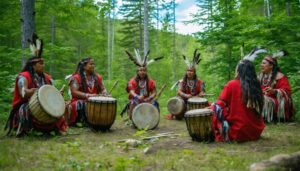
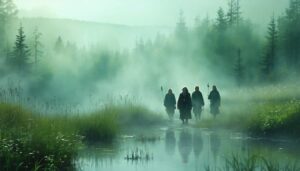
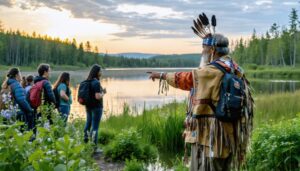

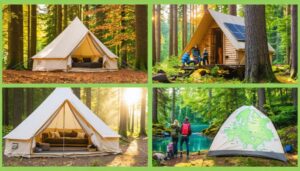

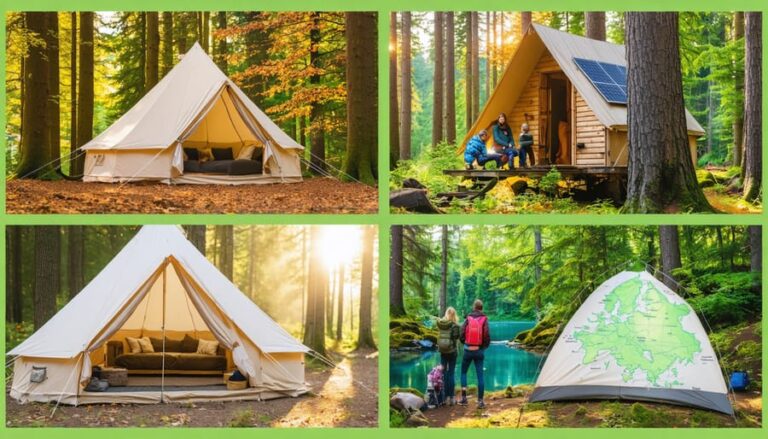
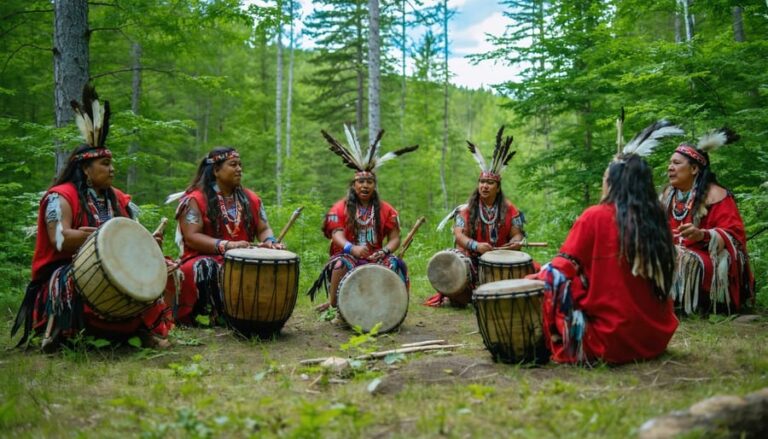
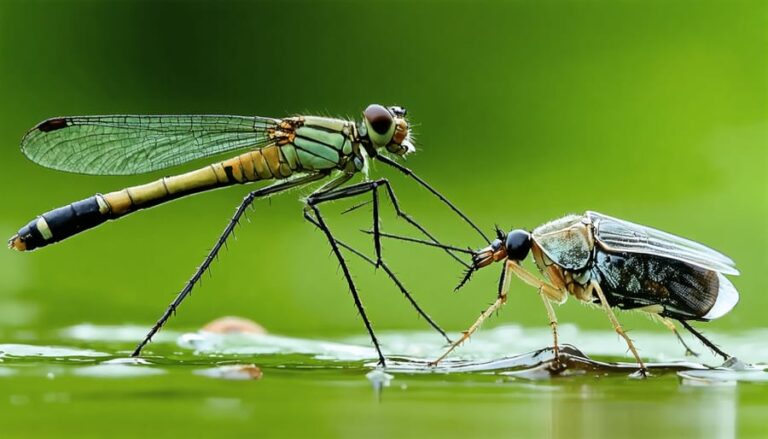

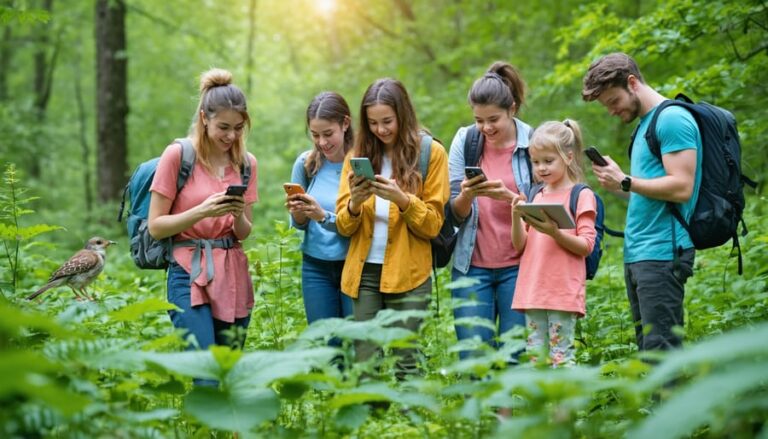
+ There are no comments
Add yours